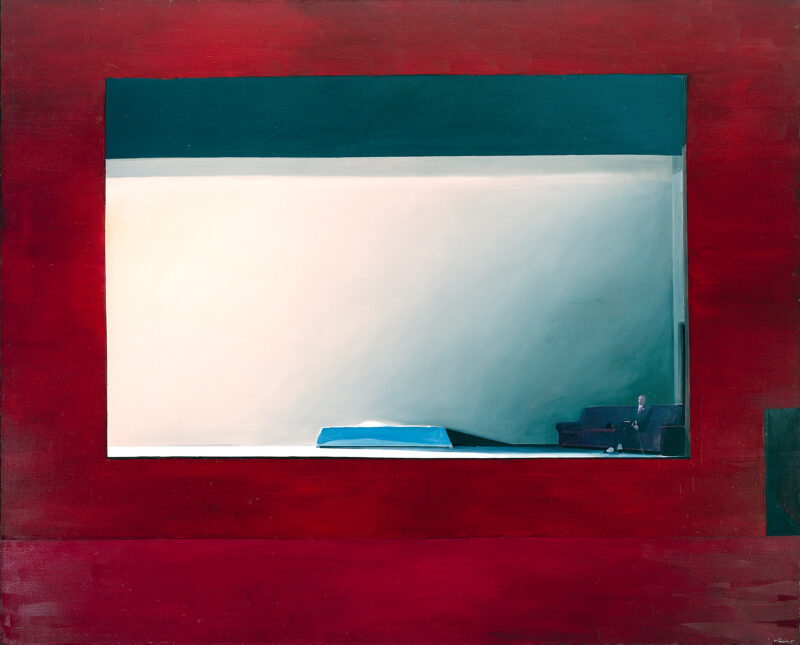
Stage No. 1 with Waiting Figure
Oliveira, Nathan
1967
Artwork Information
-
Title:
Stage No. 1 with Waiting Figure
-
Artist:
Oliveira, Nathan
-
Artist Bio:
American, 1928–2010
-
Date:
1967
-
Medium:
Oil on canvas
-
Dimensions:
102 1/4 x 125 3/4 inches
-
Credit Line:
Wichita Art Museum, Museum purchase, Friends of the Wichita Art Museum and the National Endowment for the Arts Museum Purchase Plan
-
Object Number:
1977.1
-
Display:
Not Currently on Display
About the Artwork
Painter and printmaker Nathan Oliveira was a member of the San Francisco Bay Area movement that departed from the pure painting of abstract expressionism to reintroduce figuration into American vanguard art in the late 1950s and early 1960s. The monumental canvas Stage No. 1 with Waiting Figure is one of a series of paintings executed by Oliveira during 1966-68, that propose an allegory of the nameless anxieties of the human psyche in scenes of isolated, denatured figures posing in near empty rooms of vastly greater scale and ambiguous lighting. These works are not only among the most representational and the most haunting of Oliveira’s career, they also attest more explicitly than any other of his paintings to Oliveira’s intense identification with the existential angst of European expressionists, Max Backmann, Oskar Kokoschka, and Edvard Munch, artists whose imagery deeply influenced his early career.
The physical circumstance of moving in 1965 into a new studio space in Palo Alto that housed a theater and assembly room once used as a lodge hall for the Native Sons of the Golden West prompted Oliveira’s concentration upon the motif of the cavernous stage set seen in Stage No. 1 with Waiting Figure. Large flat areas of dark red and blue frame the rectangular and lighted opening of the proscenium. The tableau revealed on stage is eerily minimal: the space is vacant except for an unoccupied bed with a blue spread and white pillow set in the center and a deep mauve sofa on the far right on which the immobile figure of a man dressed in evening clothes, and sporting spats, cane, and boutonnière, is seated.
A soft light flows onto the stage from the far left of the proscenium, diffusing from pink to light yellow to gray shadow at the far right where the man sits in silence. That he may be a gentleman caller, is suggested not only by his dandyish paraphernalia but also by the fact that in one of the related paintings in this series, Nude on a Stage, 1967, a lone female nude sleeping on the bed with her back to the audience occupies the same stage set. Yet even without this knowledge, the lone object of the bed seen juxtaposed with a fully dressed male seated on a nearby sofa in voyeuristic contemplation of the bed, injects a potent element of sexual tension into the scene. Oliveira’s masterful evocation of the emotional weight of unexplained and unfulfilled expectations by means of a light-charged but empty interior space in Stage No. 1 with Waiting Figure exhibits a close kinship with Edward Hopper’s favored metaphor of artificial light invading silent rooms occupied by lone figures awaiting the unknown